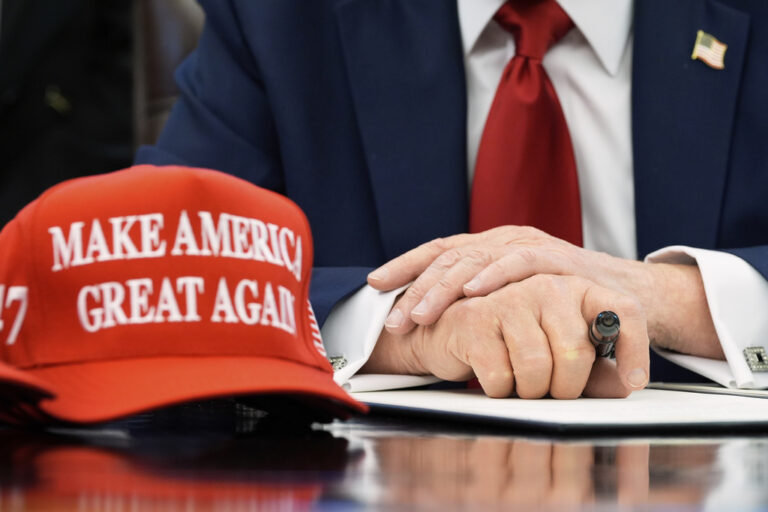President Joe Biden has two seats to fill on the influential appeals court in the nation’s capital that regularly feeds judges to the Supreme Court.
They are among the roughly 10% of federal judgeships that are or will soon be open, giving Biden his first chance to make his mark on the American judiciary.
Barring an improbable expansion of the Supreme Court, Biden won’t be able to do anything about the high court’s entrenched conservative majority any time soon. Justice Clarence Thomas, at 72, is the oldest of the court’s conservatives and the three appointees of former President Donald Trump, ranging in age from 49 to 56, are expected to be on the bench for decades.
Democrats traditionally have not made the judiciary a focus, but that is changing after four years of Trump and the vast changes he made. Biden’s appointments are also the only concrete moves he has right now to affect the judiciary at large, though there is talk about expanding the number of judges on lower courts.
The nearly 90 seats that Biden can fill, which give their occupants life tenure after Senate confirmation, are fewer than former Trump inherited four years ago. That’s because Republicans who controlled the Senate in the final two years of the Obama White House confirmed relatively few judges.
Included in the tally are 10 seats on federal courts of appeals where nearly all appeals, other than the few dozen decided by the Supreme Court each year, come to an end.
One seat is held by Merrick Garland, whose confirmation as attorney general is expected in the coming days. Another longtime judge on the court, David Tatel, has said he is cutting back on his duties, a change that allows Biden to appoint his successor.
Chief Justice John Roberts, Justice Brett Kavanaugh and Thomas were appellate judges at the courthouse at the bottom of Capitol Hill before they joined the high court atop the Hill.
The late Justices Antonin Scalia and Ruth Bader Ginsburg also served on the appeals court, where they first formed their lasting friendship.
Following Scalia’s death just over five years ago. President Barack Obama nominated Garland to the Supreme Court, but Senate Republicans didn’t give him even a hearing, much less a vote.
When Trump took office in January 2017, he had a high court vacancy to fill. Trump ended up making three Supreme Court appointments to go along with 54 appellate court picks and 174 trial judges, aided by then-Senate Majority Leader Mitch McConnell’s determination to, as he put it, “leave no vacancy behind.”
Democrats and their progressive allies say they’ve learned a lesson or two from the Republicans, and intend to make judicial nominations a greater focus than in past Democratic administrations.
“It’s an exceptional situation where you have a president and the people around him people who really see this as a high priority,” said former Sen. Russ Feingold, the Wisconsin Democrat who served with Biden in the Senate for 16 years. Feingold now is president of the American Constitution Society.
“I think President Biden knows that a part of his legacy will be undoing the damage done by Trump to the extent possible,” Feingold said.
So far, liberal groups are encouraged by the signals the White House is sending. White House counsel Dana Remus wrote senators in December that recommendations for new judges should come within 45 days of a vacancy.
Biden already has pledged to name a Black woman to the Supreme Court if a seat opens up. Justice Stephen Breyer, 82, is the oldest member of the court and could retire, but he has not announced any plans.
Democrats are in search of several kinds of diversity, following the Trump years in which more than 75 percent of judicial nominees were men and 85 percent were white.
In addition to race and gender, liberal groups are pushing for diversity of experience so that public defenders and public interest lawyers are considered along with big law firm lawyers and prosecutors who have predominated in recent administrations.
“Our view is we would like to see them prioritize experiential diversity, which would be new and different from the two previous Democratic administrations,” said Nan Aron, president of the liberal Alliance for Justice, referring to the Obama and Clinton presidencies.
So far, the judges who have announced they are retiring or taking senior status, the term for a reduced workload, have mainly been appointees of Democratic presidents. Some appear to have put off retirement until Trump left the White House.
An additional four dozen or so are eligible to take senior status or will be before Biden’s term ends in 2025. Such judges must be at least 65 years old and with 15 years of service on the bench.
But Democrats also are eyeing a major expansion of the judiciary for the first time in 30 years. The creation of new judgeships to deal increased caseloads in parts of the country could draw bipartisan support, though it might provide a windfall of judicial appointments for Biden in the short term.
Idaho Republican Sen. Mike Crapo recently wrote about the need for another federal judge for his state, and Rep. Darrell Issa, R-Calif., backs the addition of judges in California and other states.
“There is broad agreement here on the dais on both sides,” Issa said last month during a House Judiciary subcommittee hearing on court expansion.
But some Republicans and conservative groups are wary about what Democrats might try to do now that they control Congress and the White House. If Democrats conclude “that the courts are somehow out of whack and create judgeships to fill them to skew the courts, I’m not OK with that,” said the Heritage Foundation’s John Malcolm, who helped compile a list of potential Supreme Court nominees for Trump.
At the same hearing, Rep. Steve Chabot, R-Ohio, said Democrats controlled the House in the last two years of Trump’s term, but held no hearings and proposed no legislation on expansion. “I wonder why?” he asked.
(AP)











